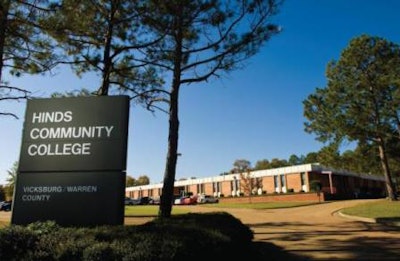 Mississippi’s Hinds Community College is raising tuition by more than 9 percent.
Mississippi’s Hinds Community College is raising tuition by more than 9 percent.JACKSON Miss.—Tuition at Mississippi’s community colleges will increase by an average of about 6 percent this fall. Of Mississippi’s 15 independently governed community colleges, 11 are choosing to raise charges on students, according to figures from the state Board of Community and Junior Colleges.
State aid has just begun to rise after cuts during the recession. As the economy recovers, people are going back to work, reducing enrollment levels and cutting tuition income.
“Increasing tuition is necessary to ease the financial burden on the colleges,” said Eric Clark, executive director of the state board. “Sometimes it’s necessary just to pay the bills.”
Average tuition will rise to $2,377 annually, up from $2,241 in the 2012-2013 school year, according to board figures. At least one college’s board hasn’t acted yet, so figures could change.
Community colleges are supposed to be an affordable gateway to higher education and skills training for people who can’t or don’t want to attend four-year universities. Enrollment in Mississippi’s two-year schools surged by more than 20 percent during the recession, even as budgets were slashed. The number of students has been drifting down for about two years now, but community colleges continue to serve more students than Mississippi’s eight public universities.
But as in four-year schools, the price of tuition at community colleges is rising faster than inflation and people’s ability to pay. Household incomes in Mississippi have been roughly flat in the last decade, according to federal figures. While community college tuition cost 3.7 percent of median family income in Mississippi in 2003, it cost 5.7 percent in 2012, according to Southern Regional Education Board figures.
A majority of Mississippi community college students pay less than full price through a combination of scholarships and financial aid, meaning the actual price students pay has been rising more slowly than the sticker price. But further complicating this year’s pressure, restrictions have curtailed federal Pell Grant funding for poorer students. As recently as 2010-11, 72 percent of Mississippi community college students were receiving aid from Pell Grants. A study early this year estimated that Pell cuts led to a loss of about 3,000 students statewide, driving down tuition revenue. Colleges are looking to tuition increases in part to make up that revenue. But those who have remained despite losing some or all of their federal aid may be paying a larger share of the bill.
Hinds Community College, the state’s largest with nearly 13,000 students, is raising tuition by more than 9 percent, from $2,060 a year to $2,260 a year. That works out to $100 a semester.
“For the students that come to us, that extra $100 will be difficult for them, we realize,” said Colleen Hartfield, vice president of community relations at Raymond-based Hinds. “But they are making an investment in their skills.”
At Hinds, some of the money will go toward a 3 percent across-the-board pay increase for employees that will begin July 1, Hartfield said. She said it’s important for the college to retain quality employees.
Many Mississippi community colleges choose to raise tuition only once every three or four years. That’s the case at Copiah-Lincoln Community College, where the sticker price is going up 10.6 percent to $2,350 a year.
“When we do have to make a decision to make an increase, we want to make sure we don’t have to go up on tuition for the next couple of years,” said spokeswoman Natalie Davis.
Four colleges have managed to avoid increases, including Mississippi Gulf Coast Community College, the state’s second-largest school.
The Perkinston-based school was the only college to show an enrollment increase last fall. President Mary Graham said that, along with steady state funding, allowed the school to hold tuition level for a third straight year at $2,472.
Also dodging the bullet was Northwest Mississippi Community College, the state’s third largest. Officials at the Senatobia-based school worked to keep enrollment up, said spokeswoman Sarah Sapp, limiting losses to 1.1 percent of students.
“We really want to remain as affordable as possible for students in our area,” Sapp said. “Sometimes the difference of $100 is enough to turn a student off.”





















